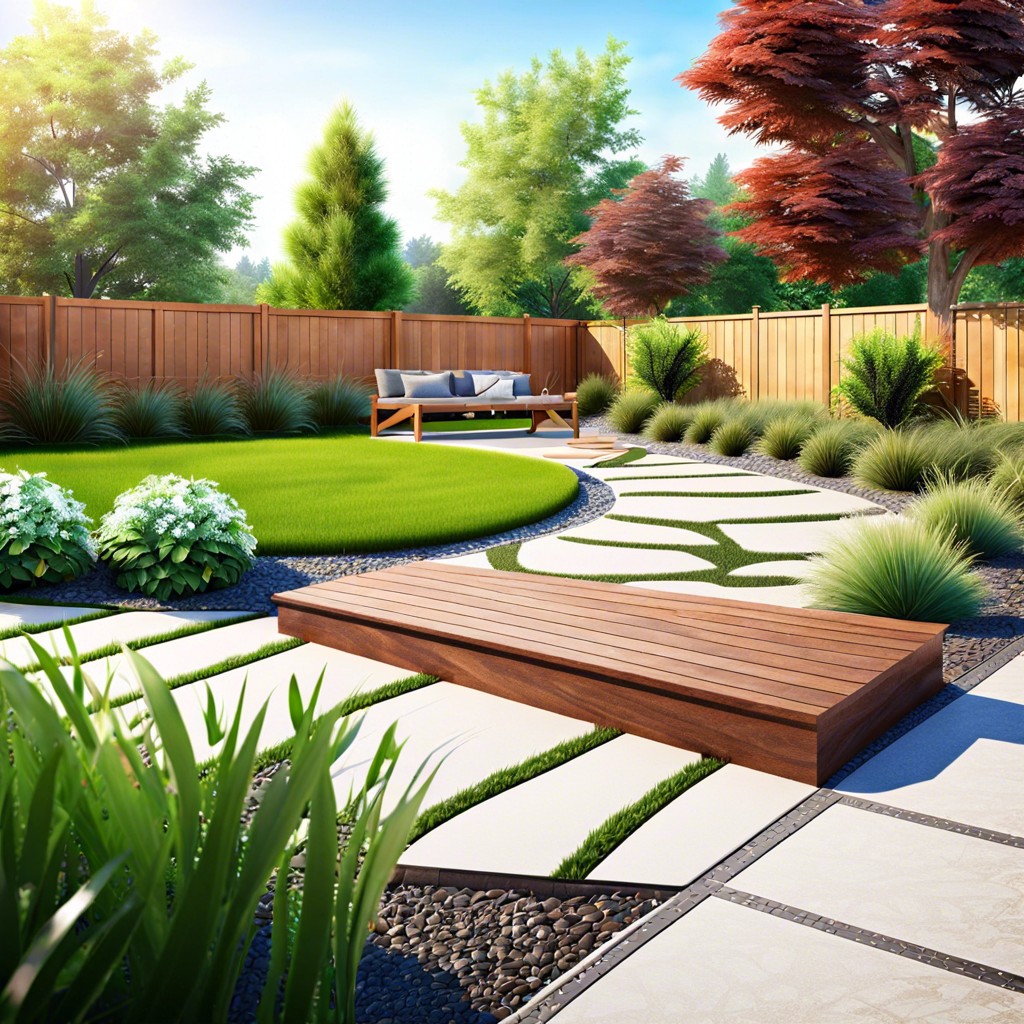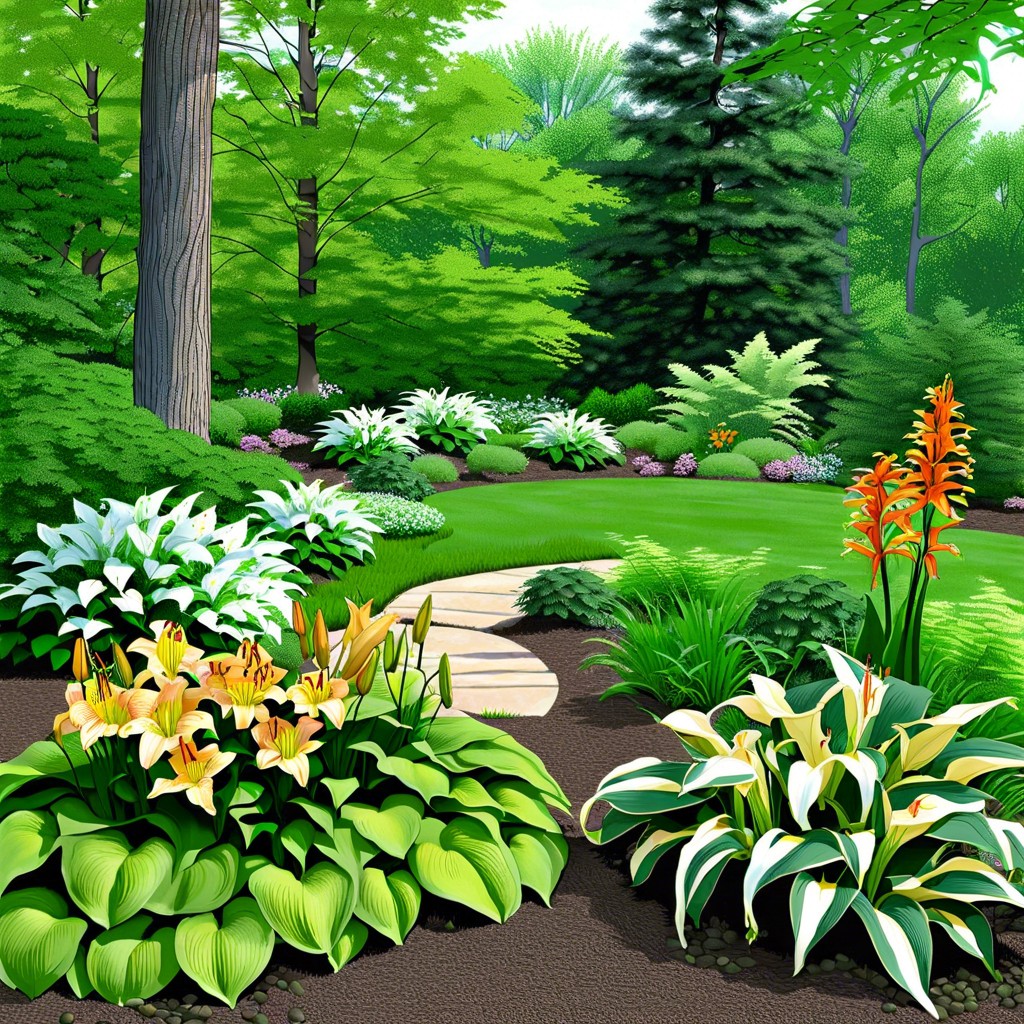In this informational article, you will learn about the various factors that influence landscaping costs, helping you to understand and budget for your next outdoor project. ## Size of the Property The size of your property is a primary determinant of landscaping costs. Larger areas require more materials, labor, and potentially machinery, which can significantly increase the total price. Smaller plots, on the other hand, tend to incur lower costs due to the reduced scale of work. ## Complexity of Design Landscaping design complexity can range from simple lawn maintenance to elaborate garden structures. Custom designs with intricate details and high-end materials will be more costly compared to basic layouts. The more complex the design, the higher the cost due to the expert planning and labor involved. ## Type of Landscaping The cost can differ based on whether you opt for softscaping, which includes plantings and lawn installations, or hardscaping, such as patios, walkways, and retaining walls. Hardscaping usually requires more expensive materials and labor, whereas softscaping might need ongoing maintenance that can add up over time. ## Choice of Plants and Materials Selecting rare plants, premium sod, or exotic materials for your landscaping will undoubtedly increase your costs. The availability and origin of the materials also play a role in pricing, with locally-sourced products typically being more affordable than those that are imported. ## Labor Rates and Project Duration Landscaping labor rates vary widely depending on the region and the expertise required. Additionally, the duration of the project will affect the total labor costs; longer projects will naturally cost more in labor than those that are completed quickly. ## Maintenance and Upkeep Ongoing maintenance, such as mowing, trimming, and fertilizing, also contributes to the overall cost of landscaping. Regular upkeep is necessary to preserve the health and appearance of your landscape and can differ in price depending on the services and frequency required. Understanding these key factors will allow you to estimate the costs associated with your landscaping project more accurately and help you plan your budget accordingly. Remember, getting quotes from professionals and comparing prices can provide you with a clearer picture of what to expect financially.
Key takeaways:
- Size of the Property: Larger areas incur higher landscaping costs.
- Complexity of Design: Elaborate designs increase the total price.
- Type of Landscaping: Softscaping and hardscaping have different costs.
- Choice of Plants and Materials: Rare plants and exotic materials are more expensive.
- Labor Rates and Project Duration: Labor costs vary by region and project length.
Average Landscaping Costs in 2024

Understanding the average costs associated with landscaping can help you set realistic budget expectations for your outdoor space makeover. In 2024, homeowners might expect to pay anywhere from a few hundred dollars for basic services like lawn care to tens of thousands for extensive overhauls that include hardscape features, outdoor lighting, and more.
To give you a general idea:
- Basic lawn care services such as mowing and edging typically range between $50 to $200 per visit, depending on the size of your lawn and frequency of care.
- More comprehensive lawn maintenance which includes aeration, fertilization, and re-seeding can cost between $200 to $500 per season.
- Installing new sod for a lush green lawn is a larger investment, usually averaging between $1,000 and $3,000 for a typical suburban property.
- For those envisioning a complete garden design with plantings, you’re looking at around $3,000 to $15,000+, with the vast range accounting for your choice of plants and the complexity of your design.
- Hardscaping projects like patios, walkways, or retaining walls can push the budget into the range of $5,000 to $30,000 or more.
It’s important to remember that prices can vary significantly based on materials, labor costs in your region, and the skill level of the professionals hired. Always reach out for multiple quotes to understand the current market rates in your area.
Landscaping Cost Breakdown
Understanding the various components involved in landscaping can help you better anticipate the costs associated with your project. Here are some key expenses to consider:
1. Design Fees: If you’re starting from scratch or making significant changes, a landscape designer might be your first hire. Their expertise isn’t free, though; expect to pay for their time and creative input.
2. Plant Material: Trees, shrubs, flowers, and lawn areas are the living elements of your landscape. Costs here can vary widely based on species and size. Remember, mature plants cost more but provide immediate impact.
3. Hardscaping: This includes non-living features like patios, walkways, and walls. Materials such as stone, concrete, and wood typically come with a higher price tag due to both materials and labor costs.
4. Installation Labor: Don’t forget the cost of skilled labor for planting, construction, and installation. It’s a significant part of your budget when professionals are involved.
5. Irrigation Systems: An efficient watering system can be an essential component of your landscape. Installation involves not just materials but also planning and labor.
6. Lighting: Outdoor lighting serves both aesthetic and safety purposes. From simple solar path lights to complex lighting systems, prices can range dramatically.
7. Soil Amendment and Preparation: Often overlooked, soil quality is vital for healthy plant growth. Improving your soil with compost or other amendments can incur additional costs.
8. Permits and Fees: Depending on your locality and the scope of your project, required permits can add more to your bill.
9. Maintenance: Post-installation care isn’t a one-time cost. Regular maintenance to keep your landscape thriving can add up, whether you do it yourself or hire a service.
Factors That Determine Landscaping Costs
Understanding the variables that influence landscaping costs can help you better prepare for your project. The size of your property is a major factor; larger spaces often require more materials and labor, increasing the overall price. The complexity and scope of the design also play a role; intricate patterns or unique features, such as waterfalls or retaining walls, will add to the cost.
The types of plants you choose are equally important. Native plants that thrive in your climate are usually more cost-effective than exotic species that require additional maintenance. The quality of materials used for hardscaping, such as patios or walkways, can also affect the budget—premium materials come at a higher price.
Labor costs should not be overlooked; skilled professionals might charge more, but their expertise can ensure the job is done correctly and may save you money in the long run by avoiding repairs or redoing work. Lastly, accessibility to your property and the current condition of your yard can influence the total cost. A yard that needs extensive clearing or preparation work before landscaping can begin will typically result in higher expenses.
Types of Landscaping
Understanding the various forms of landscaping can help pave the way for a project that aligns perfectly with your vision and budget. Here’s a quick glimpse into the different types:
Softscaping: This aspect includes planting trees, shrubs, flowers, grass, and other plants to create a living, breathing garden space. It’s all about beautifying with organic elements, and costs vary greatly depending on the types of plants and the intricacy of the design.
Hardscaping: Think of the non-living features of your yard – patios, walkways, retaining walls, and rocks. These permanent structures often require more of an upfront investment but lend to the long-term structure and usability of outdoor spaces.
Xeriscaping: For those in drier climates or who prefer low-water usage, xeriscaping incorporates drought-tolerant plants and efficient irrigation systems to create an eco-friendly garden that lowers water usage and maintenance costs.
Lightscaping: A well-thought-out lighting scheme can both enhance security and showcase key features of your yard after sunset. From solar path lights to dramatic spotlighting, lightscaping adds a whole new dimension to your landscape, day and night.
Each type adds not just aesthetic value but also functionality to your outdoor area. When planned together, they can harmonize into a landscape design that’s as practical as it is picturesque. Remember, you don’t have to choose just one – a blend tailored to your needs can yield the most satisfying and value-adding results.
Cost of Landscaping By Location
Understanding regional cost differences is key when budgeting for your landscaping project. If you live in an urban center, expect higher prices due to elevated demand for services and the potential scarcity of landscape contractors. On the flip side, suburban or rural homeowners may benefit from lower costs owing to the greater availability of local resources and reduced overheads for local businesses.
Climate is another geographic factor contributing to cost variation. In areas with a mild year-round climate, like California, there’s a booming landscaping industry that operates without the limitations of harsh winter conditions, potentially offering more competitive rates. Conversely, places with extreme weather might see higher costs as specialized equipment and plants that can withstand local conditions are required.
Don’t overlook taxes and local regulations, which vary from state to state. Some areas have strict guidelines on water usage, types of plants, and ground coverage, leading to more expensive drought-tolerant landscaping or permeable hardscaping options.
Lastly, transport costs can affect your bottom line. If materials need to be shipped from a distance, this expense will likely be passed on to you. Choosing local materials can therefore significantly reduce the overall cost.
Remember, each landscape project is unique, and understanding your region’s nuances will arm you with the knowledge needed to anticipate and plan your budget effectively.




